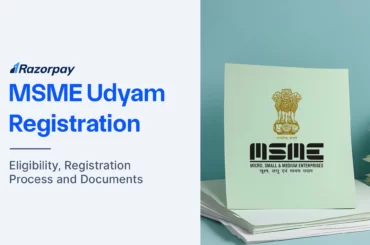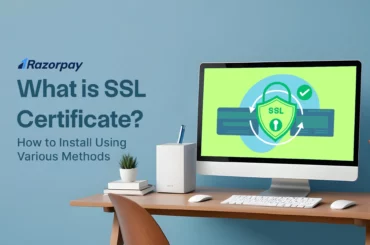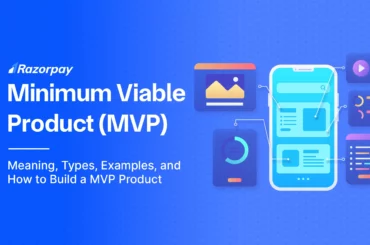The customer is god, they say. Also, a happy customer is one of the biggest assets for your business. When there’s so much being spoken about this ‘customer’ and when companies are taking the ‘customer first’ approach, there’s for sure something lying in the gold mine out there.
Let’s dive deep to understand how to make these customers your ‘forever asset’ by understanding customer retention and the best ways to execute it.
Table of Contents
What is customer retention?
To understand what customer retention is, consider this example: You acquired 1,000 customers via one of the marketing channels and over a span of 6 months, you see that on average, only 400 customers are active on a monthly basis. Certainly, your next thought is to nudge the inactive customers and get them transacting again. After all, you invested a good amount of time and effort in acquiring them. This process where you build a strategy to bring your customer back on your platform is called customer retention.
Customer retention is the collection of activities or processes an organisation uses to retain its customers over a period of time and to increase the profitability of every existing customer.
In other words, customer retention is the process of maintaining relationships with your current customers and to delight them at each step thoroughly after they have enrolled for your product or service. It encourages your customers to stay loyal to you and your business with a continued commitment to using your offering and in the long run, become your brand ambassadors.
When should you focus on customer retention?
One of the questions often asked is: Should businesses focus on customer acquisition or on customer retention? Well, the answer to this depends on where your business is in its lifecycle.
For example, a business that has just started a month back will have acquisition as its major investment point. However, a business that is about a year and a half in the market will have retention as its focus area. Look at the below-mentioned points to understand this better:
- Taking off: As mentioned above, when you are starting, your only focus should be customer acquisition. Your dictionary can eliminate the term retention at this point in time.
- Attracting eyeballs: At the stage when you have customers with some movements on your business, you can subtly slide in retention. This does not mean cold calling them or throwing notifications to them. You can softly nudge a customer who purchased your offering two months ago and has disappeared now. The best option is to send an email and incentivize them.
- Stability: Usually, after a year or two a business comes to a point where acquisition and retention both come into the picture. After all, there’s too much competition and in most cases, you are not the only place where they can find what they are looking for. The point is, at this stage, you can start a referral or loyalty program and automate more of your communications.
Pro-tip: Soft nudges over loud sales always!
- Established: When you are an established e-commerce store, one of the most challenging things is to find ways to grow your business. Also, when you have a good number of customers acquired, the art is in keeping them engaged. Retention becomes a serious concern at this point. You should now divide 50 per cent of your efforts in the acquisition and the other 50 per cent in retention. Some of the ways are by inviting your customers for conferences, giving them free credits, slashing the pricing for a particular duration and so on.
- Up and running: When your business has achieved a number of wins and has a lot of processes and automation tools in place, you ultimately reach a point where retention has to be your core KRA. Focus heavily on retention because as mentioned above, each of your customers is an asset to your business. And if a customer gets churned, he or she is not going to have a good word for your business. Remember the power of word of mouth!
Customer retention strategies that work
Feedback collection
Your customers, while signing up with you instil a certain amount of trust in you and your business. But there are chances that they might end up leaving midway. When you are running a business, there is always a scope to improve but it’s almost impossible to leverage in the right direction if you do not know what your customer thinks about you.
You need to have a process for gathering customer feedback from time to time. It helps in collecting and analyzing reviews and accordingly you can take necessary steps.
There are a number of ways to collect feedback. One of the ways commonly used is through a survey like Net Promoter Score or NPS wherein you can ask customers to participate in user testing and focus group. If you use this from time to time, you will have a pool of information to share across your organisation to identify the problem areas and find a solution. In the long run, helping you in increasing your customer lifetime value and assisting retention for you.
Communications calendar
While feedback is a powerful tool to map and understand your customers’ minds, oftentimes, people tend to miss participating in all that you send. In that case, what works is follow-ups and timely conversations. Always stay proactive with your communication and refrain from selling. Talk about them rather than your business. One of the things that all of the successful companies adopt is the practice to build a communications calendar.
A communications calendar is a chart that keeps track of customer communication. It keeps a track of every touchpoint where your customer reached out to you or the gap that has been since the last conversation between both ends. This makes it easy to launch promotional offers and features to both active and inactive customers. You can also choose to cross-sell and up-sell on the basis of the records you have.
A simple use case can be: if you have a subscription-based model, you can track the time when your customer’s subscription expires and nudge them at the right time rather than bombarding them with a number of communications.
In retention activities, this calendar can act as a tracker where you can read through the entire journey of your customer and take the right steps!
Corporate social responsibility activities
At all times, you must remember that your company is more than just a product or service. It is for the people, by the people! Your customer looks at everything your business buys, sells and advertises. And remember, your customers are smart. Do not let them question your actions and your words.
That said, one of the ways is to get yourself involved with your customers beyond product and services. Think about their (and yours) core values and create a Corporate Social Responsibility (CSR) program. Invite them to be a part of it and build an emotional connection there. It works and companies have seen it.
Company newsletter
Let’s call this the most cost-effective, simple and easiest customer retention activity. The idea is to be in touch with them with all of the latest industry updates and timely track their activities. Even though it’s simple, tools like these remind customers of your brand every time they open their inbox, in the long run assisting your customer retention efforts.
You can subscribe to the Razorpay newsletter here!
We can conclude by saying that your customer already knows your brand, your products and at some point they appreciated your offering and signed up for it. But it can happen that, in the journey, they found a better provider or things did not work out well, they chose to take a different way. But you know there can always be a plan B? In this case when you are running a business, customer retention is your plan B.
Invest your time and energy (and money!) at the right stage to keep your customers glued and you are all set to conquer the market you are in!





